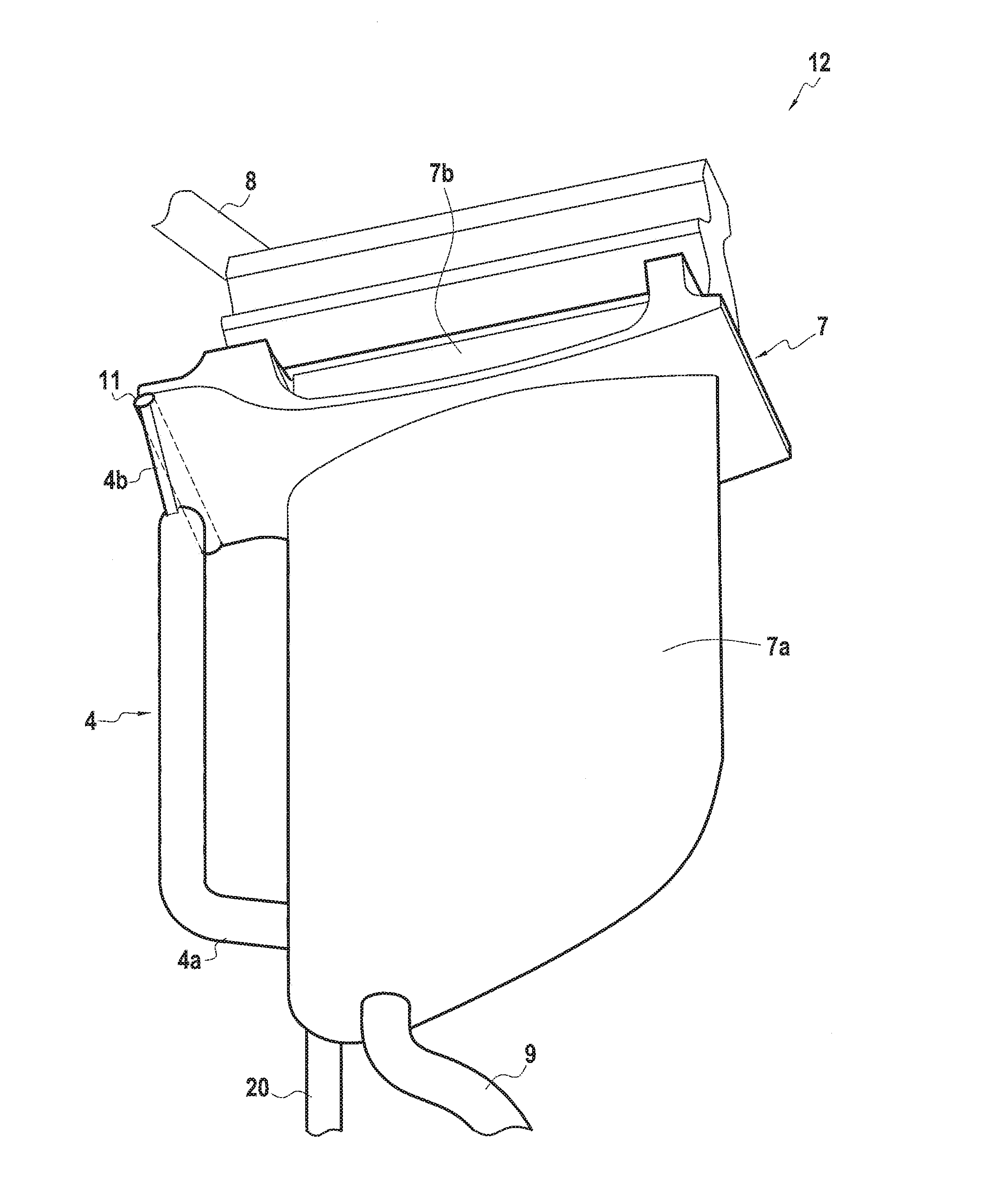Mould for monocrystalline casting
- Summary
- Abstract
- Description
- Claims
- Application Information
AI Technical Summary
Benefits of technology
Problems solved by technology
Method used
Image
Examples
Embodiment Construction
[0025]FIG. 1 shows how progressive cooling of molten metal for obtaining directional solidification can typically be performed in a casting method.
[0026]The mold 1 used in this method comprises a pouring bush 5 and a base 6. While the mold 1 is being extracted from the heater chamber 3, the base 6 is directly in contact with a soleplate 2. The mold 1 also has a molding cavity 7. It is also possible to arrange a plurality of molding cavities in a cluster in the same mold. The molding cavity 7 is connected to the pouring bush 5 by a feed channel 8 into which molten metal penetrates while it is being poured. The molding cavity 7 is also generally connected at the bottom via a baffle-shaped selector channel 9 to a smaller starter cavity 10 in the base 6. In the embodiment shown, the molding cavity 7 has a first volume 7a and a second volume 7b situated directly above the first volume 7a, and in communication therewith, while being substantially wider in a horizontal plane, so as to pres...
PUM
| Property | Measurement | Unit |
|---|---|---|
| Temperature | aaaaa | aaaaa |
| Volume | aaaaa | aaaaa |
| Shape | aaaaa | aaaaa |
Abstract
Description
Claims
Application Information
 Login to View More
Login to View More - R&D
- Intellectual Property
- Life Sciences
- Materials
- Tech Scout
- Unparalleled Data Quality
- Higher Quality Content
- 60% Fewer Hallucinations
Browse by: Latest US Patents, China's latest patents, Technical Efficacy Thesaurus, Application Domain, Technology Topic, Popular Technical Reports.
© 2025 PatSnap. All rights reserved.Legal|Privacy policy|Modern Slavery Act Transparency Statement|Sitemap|About US| Contact US: help@patsnap.com



